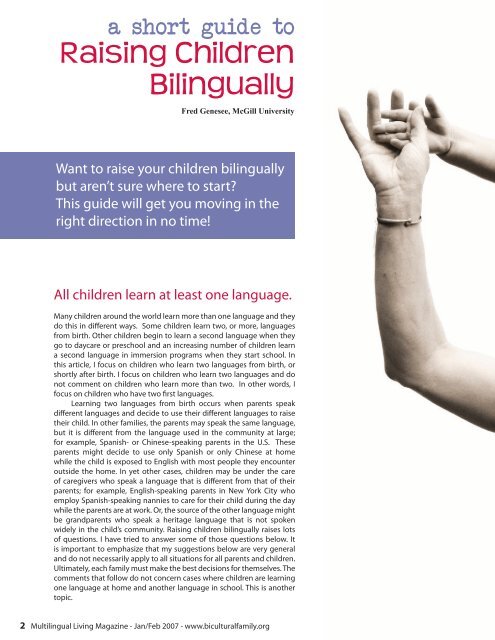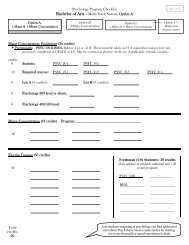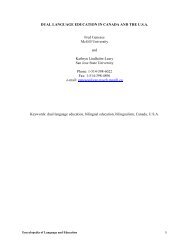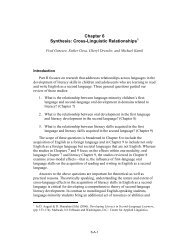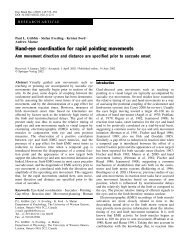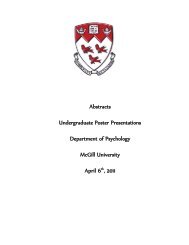A Short Guide to Raising Children Bilingually - McGill University
A Short Guide to Raising Children Bilingually - McGill University
A Short Guide to Raising Children Bilingually - McGill University
Create successful ePaper yourself
Turn your PDF publications into a flip-book with our unique Google optimized e-Paper software.
a short guide <strong>to</strong><br />
<strong>Raising</strong> <strong>Children</strong><br />
<strong>Bilingually</strong><br />
Fred Genesee, <strong>McGill</strong> <strong>University</strong><br />
Want <strong>to</strong> raise your children bilingually<br />
but aren’t sure where <strong>to</strong> start?<br />
This guide will get you moving in the<br />
right direction in no time!<br />
All children learn at least one language.<br />
Many children around the world learn more than one language and they<br />
do this in different ways. Some children learn two, or more, languages<br />
from birth. Other children begin <strong>to</strong> learn a second language when they<br />
go <strong>to</strong> daycare or preschool and an increasing number of children learn<br />
a second language in immersion programs when they start school. In<br />
this article, I focus on children who learn two languages from birth, or<br />
shortly after birth. I focus on children who learn two languages and do<br />
not comment on children who learn more than two. In other words, I<br />
focus on children who have two first languages.<br />
Learning two languages from birth occurs when parents speak<br />
different languages and decide <strong>to</strong> use their different languages <strong>to</strong> raise<br />
their child. In other families, the parents may speak the same language,<br />
but it is different from the language used in the community at large;<br />
for example, Spanish- or Chinese-speaking parents in the U.S. These<br />
parents might decide <strong>to</strong> use only Spanish or only Chinese at home<br />
while the child is exposed <strong>to</strong> English with most people they encounter<br />
outside the home. In yet other cases, children may be under the care<br />
of caregivers who speak a language that is different from that of their<br />
parents; for example, English-speaking parents in New York City who<br />
employ Spanish-speaking nannies <strong>to</strong> care for their child during the day<br />
while the parents are at work. Or, the source of the other language might<br />
be grandparents who speak a heritage language that is not spoken<br />
widely in the child’s community. <strong>Raising</strong> children bilingually raises lots<br />
of questions. I have tried <strong>to</strong> answer some of those questions below. It<br />
is important <strong>to</strong> emphasize that my suggestions below are very general<br />
and do not necessarily apply <strong>to</strong> all situations for all parents and children.<br />
Ultimately, each family must make the best decisions for themselves. The<br />
comments that follow do not concern cases where children are learning<br />
one language at home and another language in school. This is another<br />
<strong>to</strong>pic.<br />
2 Multilingual Living Magazine - Jan/Feb 2007 - www.biculturalfamily.org


